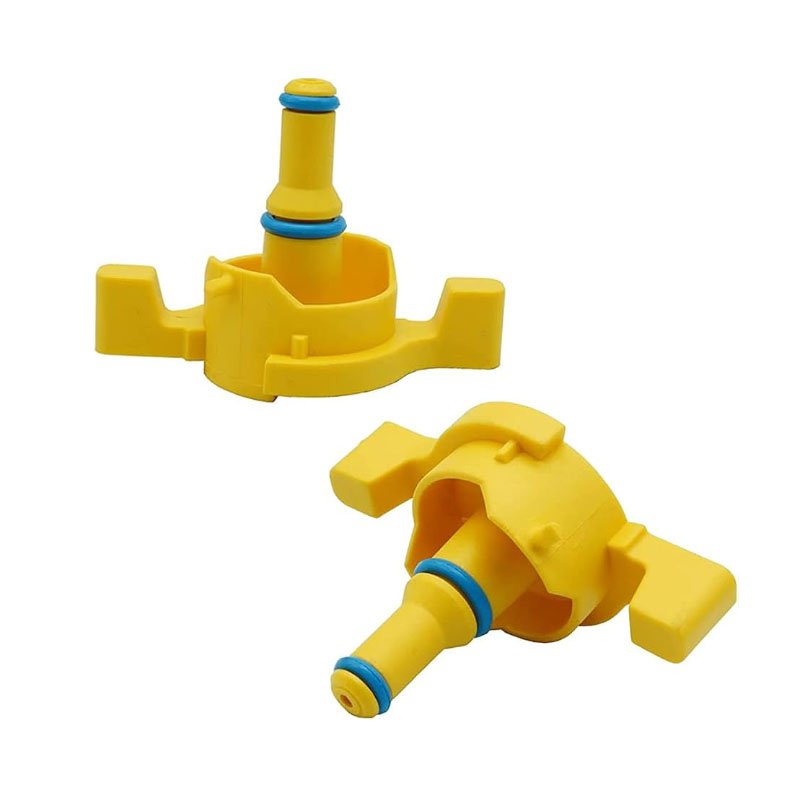front torque converter seal
Understanding Front Torque Converter Seal Importance and Maintenance
The front torque converter seal plays a crucial role in the functionality and efficiency of an automatic transmission system. As vehicles continue to evolve with advanced technologies, understanding the significance of torque converter seals becomes paramount for both vehicle enthusiasts and everyday drivers.
What is a Torque Converter?
Before diving into the specifics of the front torque converter seal, it's essential to understand what a torque converter is. The torque converter is a type of fluid coupling that allows the engine to spin independently of the transmission. It helps to multiply torque and facilitate a smoother transfer of power from the engine to the wheels. This component is vital for the seamless performance of an automatic transmission, providing the necessary power during acceleration and deceleration.
Role of the Front Torque Converter Seal
The front torque converter seal is located between the torque converter and the engine. Its primary function is to prevent transmission fluid from leaking through the connection point. This seal is designed to withstand high pressure and reduce friction, ensuring the efficient operation of the torque converter.
When the front torque converter seal is functioning properly, it maintains the correct fluid levels in the transmission system, which is essential for optimal performance. However, over time, seals can wear out, leading to potential leaks. When this happens, it can result in reduced fluid levels, causing overheating, slipping, and ultimately, transmission failure.
Common Signs of a Failing Torque Converter Seal
Being vigilant about the symptoms of a failing front torque converter seal can save you from costly repairs. Here are some common signs to watch out for
1. Transmission Fluid Leaks The most obvious sign is the presence of red or brown transmission fluid under your vehicle. If you notice puddles or spots, it could indicate a faulty seal.
2. Overheating Transmission A low fluid level due to a leak can lead to overheating. If the transmission temperature rises abnormally, it is essential to investigate potential causes, including seal failures.
front torque converter seal

3. Slipping Gears If the transmission struggles to engage gears or exhibits jerky movements, the lack of adequate fluid caused by a bad seal could be a factor.
4. Unusual Noises Grinding, whining, or other unusual sounds while driving can signal issues with the torque converter or related components, including the seal.
Maintenance of the Torque Converter Seal
Preventative maintenance is key to extending the lifespan of the front torque converter seal and the overall transmission system. Here are some tips for proper maintenance
1. Regular Fluid Checks Monitoring the transmission fluid level and condition can help identify issues early. Ensure the fluid is at the recommended level and is clean. Dark or burnt-smelling fluid is a sign of potential problems.
2. Scheduled Fluid Changes Follow the vehicle manufacturer's recommendations for fluid changes. Fresh transmission fluid reduces wear and tear on seals and other components.
3. Address Leaks Promptly If you notice any signs of fluid leaks, having the issue addressed immediately can prevent more extensive damage and costly repairs.
4. Professional Inspections Regular inspections by a qualified mechanic can catch potential issues before they escalate. Mechanics can check seals, the condition of the torque converter, and the overall health of the transmission system.
Conclusion
The front torque converter seal is a small but vital component in an automatic transmission system. Its role in preventing fluid leaks directly impacts the performance and longevity of the transmission. By understanding the signs of failure and maintaining the vehicle properly, drivers can ensure smoother performance and avoid costly repairs in the future. Regular upkeep and being mindful of your vehicle's behavior will help keep your transmission system in peak condition.
-
The Ultimate Guide to Car Repair Kits: Tools and Essentials Every Driver Should Own
News Aug.01,2025
-
The Complete Guide to Oil Pan Gaskets: Sealing Engine Leaks the Right Way
News Aug.01,2025
-
Preventing Oil Leaks: A Complete Guide to Oil Pan Gaskets and Drain Seals
News Aug.01,2025
-
Everything You Need to Know About Oil Pan Gaskets and Drain Plug Seals
News Aug.01,2025
-
Essential for Car Owners: How to Use a Car Repair Kit to Deal with Minor Breakdown
News Aug.01,2025
-
Comprehensive Guide to Engine Oil Sump Gaskets and Related Seals
News Aug.01,2025
-
The Ultimate Guide to Boat Propeller Bearings and Trailer Wheel Bearings
News Jul.31,2025
Products categories















